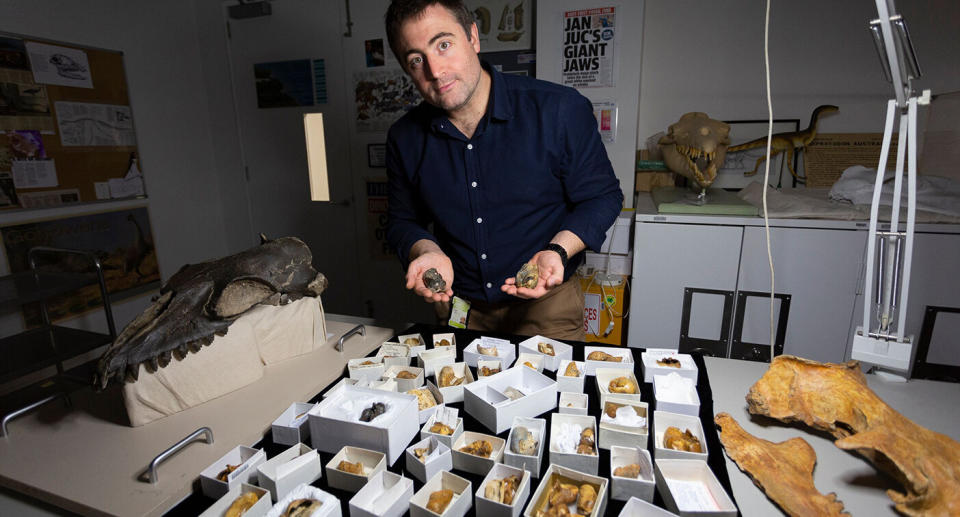'Bizarre' ancient toothed whale fossils discovered in Victoria
Thousands of "bizarre" toothed whales roamed the planet's oceans millions of years ago, but disappeared because of dropping sea levels.
Victorian scientists used fossilised ear bones to help identify why there was a mass extinction of the toothed baleen whales around 23 million years ago.
Hundreds of the bones, which are described as the whales' "fingerprints", were collected around the Torquay and Geelong areas in Victoria's southwest.

"We wanted to try to get to the bottom of the question of what happened to the whales during this apparent dark age," Museums Victoria palaeontologist and curator Dr Erich Fitzgerald said.
The research was published in a leading international palaeontology journal this week.
There are very few whale fossils and almost no known fossils of baleen whales from the mass extinction period.

Before the mass extinction there was an abundance of different whales species including "bizarre" types with teeth.
"There is the apparent extinction of really bizarre toothed baleen whales ... early primitive baleen whales that were so archaic they still actually had teeth," Dr Fitzgerald said.
He said the research suggested the smaller types of toothed whales that lived in coastal, shallow waters became extinct in the "dark age" period.
"What happened to those coastal, small bodied, weirdo, little toothed whales ... environmental change has a big role to play."

He explained a global drop in sea levels led to a loss of coastal seas and a loss of habitat for the toothed whales.
The bigger offshore whales managed to survive the sea level changes but it took millions of years for those whales to repopulate coastal areas.
The take-away from the research showed environmental change has evolutionary consequences, Dr Fitzgerald said.
Do you have a story tip? Email: newsroomau@yahoonews.com.
You can also follow us on Facebook, download the Yahoo News app from iTunes or Google Play and stay up to date with the latest news with Yahoo’s daily newsletter. Sign up here.



